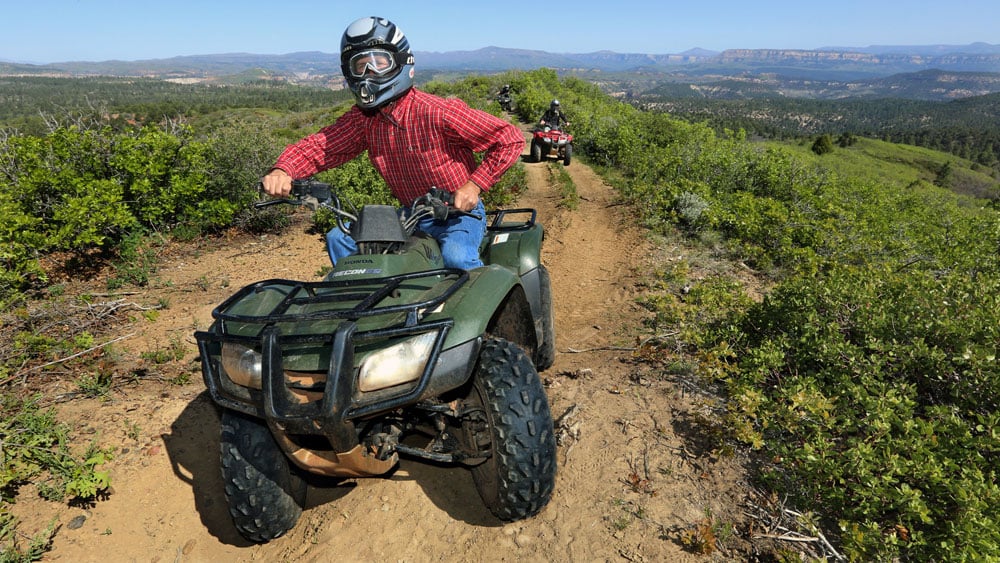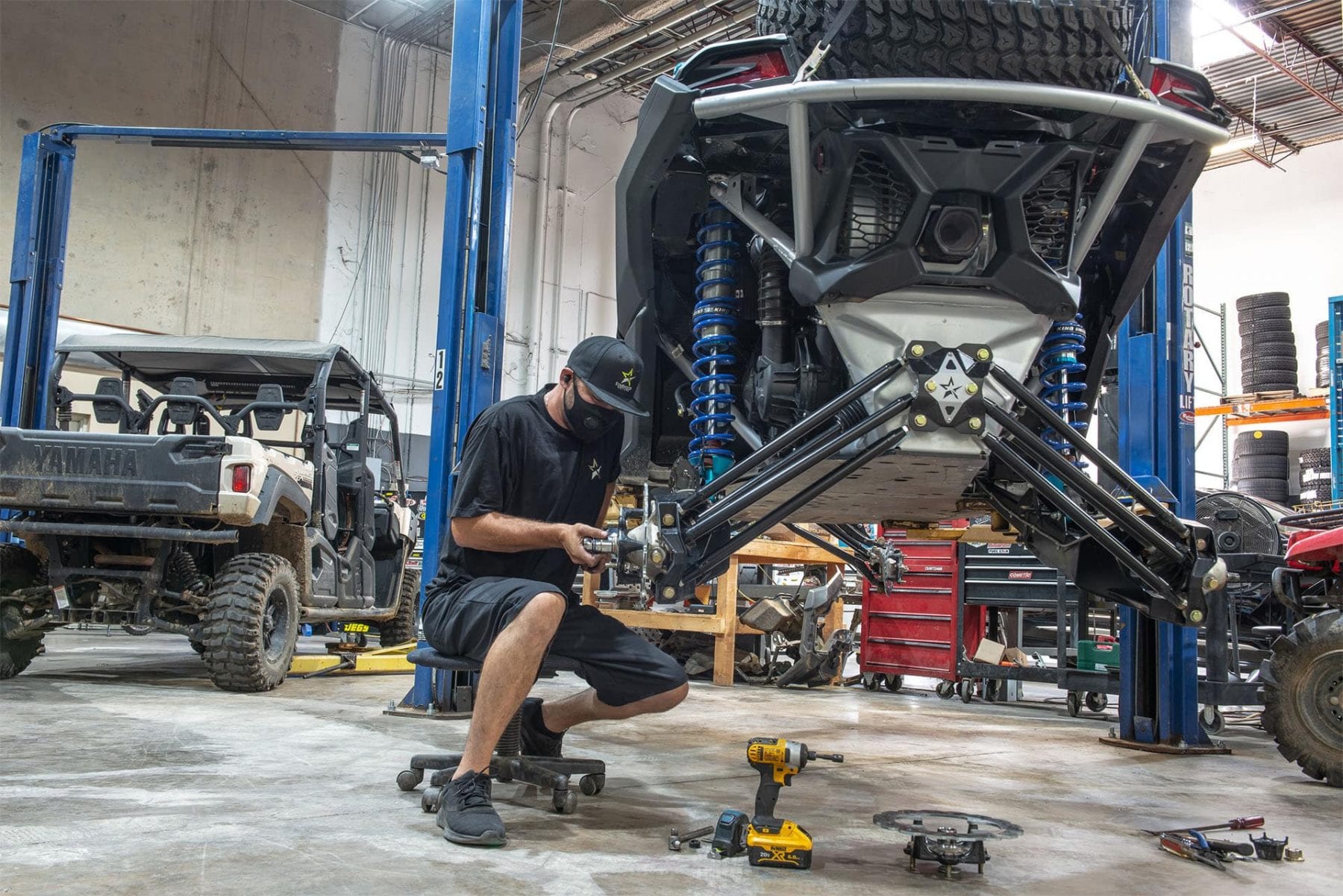Unlocking the Thrills: Mastering ATV Riding Techniques for Beginners
Unlocking the Thrills: Mastering ATV Riding Techniques for Beginners
Blog Article
ATV Riding Techniques: Grasping the Art of Off-Roading

Body Positioning
To successfully navigate via difficult off-road surface, it is important for ATV riders to continually preserve correct body positioning. Keeping the appropriate body placement while riding an ATV not only boosts control and stability yet also makes certain the biker's safety. By taking on the right body positioning methods, riders can effectively disperse their weight, improve their equilibrium, and decrease the danger of mishaps or injuries.
One key facet of proper body placing is maintaining the feet on the foot secures. Placing the feet on the foot pegs allows the cyclist to keep security and control over the ATV. The motorcyclist's knees must be somewhat bent, offering a slight suspension to soak up shocks and keep balance. Furthermore, the motorcyclist's top body should stay loosened up and flexible, enabling for fast and smooth motions when required. This consists of maintaining a light grip on the handlebars to keep control without extreme force.
In addition, the biker's eyes must constantly be concentrated in advance, scanning the surface and preparing for any type of challenges or changes in the route. By keeping an ahead gaze, cyclists can make instant decisions and respond suitably to challenging terrain.
Throttle Control
Structure upon the relevance of correct body placing for ATV bikers, mastering throttle control is an important skill that enables cyclists to successfully maneuver via different off-road terrains. Strangle control refers to the ability to manage the quantity of power supplied to the ATV's engine. By comprehending how to adjust the throttle, cyclists can make certain a regulated and smooth acceleration, enabling them to navigate obstacles with precision.
One of the essential elements of throttle control is discovering to modulate the throttle smoothly. Abrupt or jerky movements can cause the ATV to lose grip or end up being unsteady, making it challenging to maintain control. Instead, bikers need to go for calculated and gradual throttle inputs, especially when going across challenging terrains. This method permits the ATV to preserve a constant rate and supplies much better grip, decreasing the risk of mishaps.
Along with smooth inflection, motorcyclists have to also discover just how to balance the throttle with other riding methods, such as body positioning and stopping. For instance, when climbing up high hillsides, bikers require to use enough throttle to maintain momentum without causing or overpowering the atv wheel spin. Likewise, when coming down high slopes, motorcyclists need to use the throttle in combination with correct body stopping and positioning to keep control and avoid the ATV from moving or toppling.

Braking Methods
A necessary element of ATV riding techniques is mastering efficient stopping techniques. It is crucial to keep in mind that rough stopping with only the front brake can cause the ATV to pitch ahead, possibly leading to loss of control or even turning over. By mastering these braking strategies, you can enhance your ATV riding abilities and guarantee a secure and enjoyable off-roading experience.
Cornering Techniques
One important element of understanding ATV riding methods is understanding efficient cornering methods. Cornering on an ATV can be challenging, however with the ideal strategies, bikers can browse turns safely and effectively. The key to successful cornering is to preserve control of the ATV while taking full advantage of grip and minimizing the danger of toppling.
To carry out a proper cornering technique, cyclists should come close to the turn at a suitable speed, ensuring they are not going too slow-moving or as well quick. It is important to shift the body weight in the direction of the within the turn, page leaning into it to preserve equilibrium and security. This aids for the centrifugal pressure and keeps the ATV upright.
Additionally, motorcyclists need to maintain their eyes focused on the leave factor of the turn as opposed to the prompt path in advance (ATV). This enables smoother and much more exact steering, as it helps the rider expect any kind of obstacles or adjustments in terrain
In addition, correct throttle control plays a substantial function in cornering. Riders need to modulate the throttle efficiently, staying clear of abrupt accelerations or decelerations, which can cause loss of control.
Uphill and Downhill Riding
When navigating off-road terrain, ATV motorcyclists must master the strategies for uphill and downhill riding to preserve control and ensure security. Uphill riding requires a mix of balance, throttle control, and weight distribution. As motorcyclists ascend steep inclines, they must lean ahead to shift their weight in the direction of the front of the ATV, which enhances traction on the front wheels and stops the vehicle from turning in reverse. ATV. In addition, maintaining a constant throttle and preventing sudden acceleration or slowdown assists to stop the ATV from losing momentum or getting stuck. Downhill riding, on the other hand, requires cyclists to lean back and move their weight towards the rear get redirected here of the ATV. This helps to preserve security and prevent the lorry from flipping onward. It is essential to utilize the brakes moderately and next page use them progressively to avoid securing the wheels and blowing up. In addition, motorcyclists need to choose the course with the least challenges, as browsing downhill can be extra challenging because of the increased rate and decreased traction. By mastering the strategies for uphill and downhill riding, ATV riders can with confidence deal with various off-road surfaces and delight in a exciting and secure experience.
Final Thought
Finally, understanding the art of ATV riding needs a mix of body positioning, throttle control, stopping strategies, and efficient cornering. Uphill and downhill riding also need particular skills to browse safely. By executing these techniques, bikers can enhance their off-roading experience and improve their general control and security on the ATV.
ATV Riding Techniques: Grasping the Art of Off-Roading is a thorough guide that digs into the ins and outs of grasping the abilities needed for off-road ATV riding. Whether you are a beginner or a knowledgeable cyclist, ATV Riding Techniques: Understanding the Art of Off-Roading provides crucial suggestions to assist boost your off-road ATV riding abilities to the following degree.

Report this page